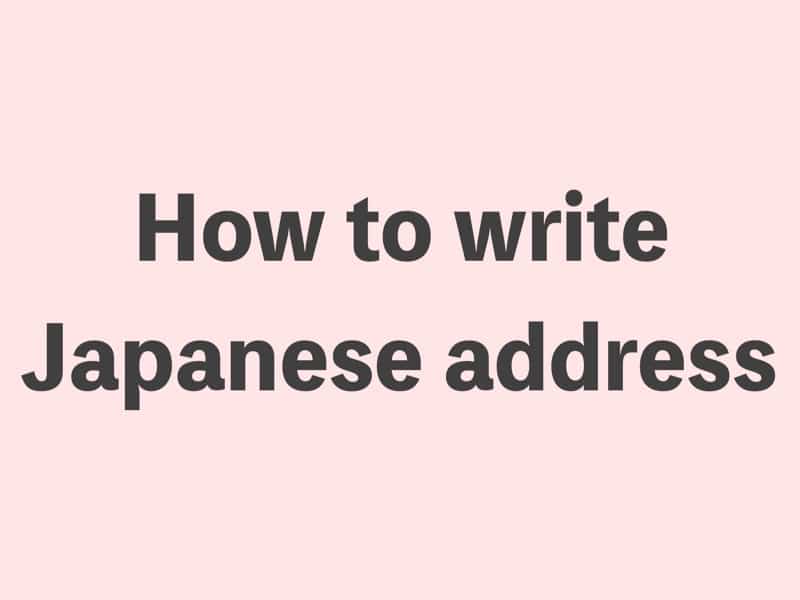Writing a Japanese address in Kanji and Romaji can be tricky, especially if you’re unfamiliar with Japan’s unique address system. Japanese addresses start with the postal code and go from the largest area to the smallest, which is the opposite of many Western address formats. In this guide, we’ll break down each part of a Japanese address, explain how to write it in Romaji, and provide tips for accuracy.
Kanji
In Japanese, addresses are written starting with the postal code, followed by the prefecture, then the ward, area, and finally the street number. Here’s how it looks:
- Postal Code (such as 〒105-0011)
- Prefecture (such as 東京都, Tokyo-to)
- Ward (such as 港区, Minato-ku)
- Area (such as 芝公園, Shiba-koen)
- Street Number (such as 4丁目2−8)
For example, Tokyo Tower’s address in Japanese would be:
〒105-0011 東京都港区芝公園4丁目2−8
Let’s use another example, like Osaka Castle:
- Postal Code: 〒540-0002
- Prefecture: 大阪府 (Osaka-fu)
- City: 大阪市 (Osaka-shi)
- Ward: 中央区 (Chūō-ku)
- Area: 大手前 (Ōtemae)
- Street Number: 1-1
So, the full address for Osaka Castle in Japanese would be:
〒540-0002 大阪府大阪市中央区大手前1-1
What does 〒 mean?
The symbol 〒 is Japan’s postal mark, called 郵便記号 (yūbin kigō) in Japanese. It indicates the start of a postal code. This mark was inspired by the katakana character テ (te), derived from the word 逓信 (teishin), meaning “communications” in Japanese. You’ll see 〒 on mailboxes, envelopes, and official postal documents throughout Japan.
What is 丁目 or 番地
丁目 (chōme) and 番地 (banchi) are terms used in Japanese addresses to describe specific divisions within an area, often corresponding to blocks or districts.
- 丁目 (chōme) refers to a district or block within a larger area. It’s typically used to describe divisions within a neighborhood or town. For example, 4丁目 (yon-chōme) means “the fourth block.”
- 番地 (banchi) refers to the specific block or lot number within a district. It identifies a more specific location, often used in combination with 丁目. For example, 2番地 (ni-banchi) means “block number 2.”
In a Japanese address, 丁目 comes before 番地, as they both describe a location within the area. For instance, 4丁目2番地 (yon-chōme ni-banchi) means “block 2 in the 4th district.”
These terms help pinpoint an exact location, since Japanese addresses do not typically include street names like in Western addresses.
When writing an address in Romaji (the Roman alphabet), you often simplify 丁目 (chōme) and 番地 (banchi) by just using the numbers. For example: Instead of writing 4丁目2番地 (yon-chōme ni-banchi), you can simply write 4-2. This is a common practice in both Japanese and Romaji addresses.
Writing an apartment or room number
Take a look at the example:
- リバーサイド205号室
- リバーサイド (Riverside) is the name of the building or complex.
- 205号室 (205-gō-shitsu) refers to Room 205.
In Romaji, this would be written as:
Riverside 205
- ABC団地4棟502号室
- ABC団地 (ABC danchi) refers to a housing complex named “ABC Housing Complex.”
- 4棟 (4-tō) means “Building 4” in the complex.
- 502号室 (502-gō-shitsu) refers to Room 502 in Building 4.
In Romaji, this would be written as:
ABC Danchi, Building 4, Room 502 or ABC Danchi 4-502
Romaji
When writing Japanese addresses in Romaji, we follow the Western-style order, which is different from the traditional Japanese format. Instead of starting with the postal code and listing the largest area first, we begin with the street number, followed by the city, then the prefecture, and end with the postal code. This approach aligns with the typical European and American address style, making it easier for international readers to understand.
Let’s look at an example using the address for Tokyo Tower.
〒105-0011 東京都港区芝公園4丁目2−8
In Romaji, it would be written as:
4-2-8 Shiba Koen, Minato-ku, Tokyo, 105-0011
The full address for Osaka Castle in Japanese would be:
〒540-0002 大阪府大阪市中央区大手前1-1
In Romaji, it would be written as:
1-1 Otemae, Chuo-ku, Osaka-shi, Osaka, 540-0002



コメント